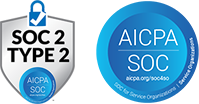What Is Augmented Analytics?
- Introduces AI and ML into analytics workflows to streamline data preparation, insight generation and visualization.
- Reduces manual intervention by automating tasks such as data cleansing, anomaly detection and report generation.
- Enhances decision-making by delivering faster, more accurate insights through predictive modeling and natural language queries.
- Provides an intuitive interface that makes advanced analytics accessible to users across skill levels, from analysts to executives.
- Bridges the gap between data experts and business stakeholders by offering self-service analytics tools that require minimal technical knowledge.
- Offers proactive insights by automatically suggesting relevant metrics, benchmarks and prioritized action items based on evolving data patterns.
Core Components of Augmented Analytics
- Automated data preparation that cleans, structures and integrates diverse datasets without manual coding.
- AI-driven insight generation that applies statistical algorithms and machine learning to identify correlations, trends and outliers.
- Natural language processing (NLP) that enables conversational querying and automated narrative summaries.
- Predictive modeling that forecasts outcomes such as employee turnover risk and skills-gap likelihood.
- Advanced data visualization tools that render insights into interactive dashboards, heat maps and charts.
- Governance, security and compliance features that ensure data integrity and regulatory adherence.
- Conversational AI assistants that guide users through analytics tasks, answer follow-up questions and facilitate collaboration across teams without manual report building.
- Embedded automated narrative generation that crafts clear, plain-language summaries of key findings, supporting efficient stakeholder communication and decision alignment.
- Context-aware alerting and anomaly detection that proactively notifies users of significant data shifts or potential risks via email, mobile notifications or integrated collaboration platforms.
Benefits of Augmented Analytics
- Accelerates time-to-insight by replacing manual workflows with automated processing and analysis.
- Empowers non-technical users with intuitive interfaces, natural language queries and guided recommendations.
- Improves accuracy by minimizing human error in data transformation and model selection.
- Scales effortlessly to handle growing data volumes and multiple sources across the enterprise.
- Fosters a data-driven culture by democratizing access to analytics and enabling evidence-based decision-making.
- Enhances compliance with built-in audit trails, governance controls and privacy safeguards.
- Increases agility by providing on-demand insights that support rapid pivoting in response to evolving business priorities.
- Lowers total cost of ownership by reducing reliance on specialized IT resources and eliminating manual maintenance of analytics pipelines.
- Integrates seamlessly with existing HR systems (e.g., HRIS, ATS, LMS) to enrich analytics with comprehensive workforce data and avoid data silos.
Applications in HR
- Talent acquisition: Screens resumes using performance benchmarks and cultural-fit analytics to identify top candidates.
- Onboarding: Tracks training progress, highlights skill gaps and recommends personalized development pathways.
- Employee retention: Predicts turnover risk using engagement scores, performance reviews and tenure data to suggest targeted interventions.
- Diversity and inclusion: Analyzes demographic trends and promotion patterns to uncover bias and recommend equitable practices.
- Workforce planning: Simulates staffing scenarios under various business conditions to optimize headcount and budget allocation.
- Compensation analysis: Benchmarks salary data against market trends to design competitive pay structures.
- Performance management: Provides real-time feedback analysis and coaching recommendations based on sentiment and outcome metrics.
- Learning and development: Identifies emerging skill needs and tailors programs to close knowledge gaps and support career growth.
- Employee engagement: Analyzes survey responses, social sentiment and recognition program data to pinpoint drivers of engagement and satisfaction.
- Compliance and risk management: Monitors policy adherence, regulatory requirements and labor law changes to mitigate compliance risks and support audit readiness.
- Succession planning: Evaluates global talent pools and pipelines to guide leadership development strategies.
Frequently Asked Questions
What is the future of augmented analytics?
The future of augmented analytics lies in broader adoption by non-technical users, with AI continually automating more of the analytics lifecycle. Platforms will proactively suggest insights, surface anomalies in real time and guide decision-making through prescriptive recommendations, enabling organizations to act immediately on emerging trends.
What are the four types of analytics?
- Descriptive Analytics – What happened?
- Diagnostic Analytics – Why did it happen?
- Predictive Analytics – What might happen?
- Prescriptive Analytics – What should we do about it?
What is an example of prescriptive analytics in HR?
A prescriptive analytics application in HR could recommend individualized retention strategies for employees at risk of leaving, based on models that factor in historic attrition drivers, engagement survey results and peer-sentiment data, then suggest targeted interventions such as mentorship programs or tailored benefits.
What is an example of prescriptive analytics in banking?
In banking, a prescriptive analytics solution might analyze a customer’s transaction history, credit score and market conditions to recommend specific loan products, optimal interest rates or cross-sell offers most likely to convert while managing portfolio risk.
What are some examples of predictive analytics?
Predictive analytics examples include forecasting employee turnover by modeling retention drivers, anticipating future training needs by tracking skill-gap trends, and projecting hiring requirements using historical recruitment and growth metrics.
What is the difference between predictive and prescriptive analytics?
Predictive analytics forecasts potential future outcomes—such as the likelihood an employee will leave—based on historical patterns. Prescriptive analytics goes a step further by recommending concrete actions—such as which retention program to deploy—to influence those predicted outcomes.
Conclusion
Augmented analytics elevates traditional data analysis by embedding AI and ML throughout the analytics workflow, automating complex tasks and making insights accessible to everyone from HR specialists to executives. In the context of human resources, it drives smarter talent acquisition, personalized development, proactive retention and data-driven diversity initiatives. By partnering with SplashBI, your organization can harness the full power of augmented analytics to build agile, engaged and high-performing teams.



